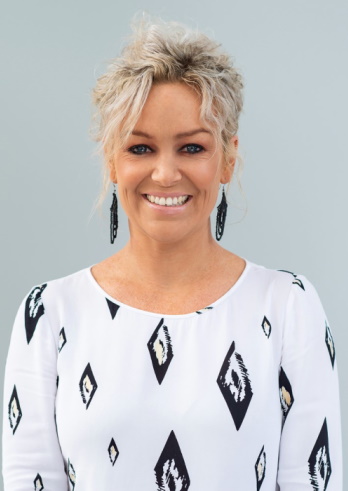The significant role of glass in built environments

Glass transcends mere transparency. It’s a transformative canvas, shaping light, space, and comfort within our built spaces. It’s a silent partner in sustainability, managing heat and promoting energy efficiency. It’s a guardian of safety, standing resolute against natural elements. It’s an effective sound insulator, ensuring comfort for the occupants.
Choosing the right glass involves a nuanced understanding of aesthetics, performance, safety compliance, and environmental responsibility. As a leading manufacturer of louvre window systems, Safetyline Jalousie can help you make an informed decision with our comprehensive guide to high-performance glass options which are perfectly suitable to your specific applications.
Safety Glass

This is designed to be less likely to break. If it does, it will do so in such a way that minimises the risk of injury or damage.
Critical locations where safety glass must be considered are outlined in Australian Standard AS1288. As a
general guide, safety glass must be used in:
– Bathrooms
– doors and sidelights
– balustrades and stairwells
– schools and childcare buildings where glass is within 100mm of the floor
– Special activity buildings, such as gyms and swimming pools.
There are four different types of safety glass that can be used in Safetyline Jalousie’s range of louvre windows.
1. Toughened or tempered glass
This involves heating the glass to a high temperature and then cooling it rapidly to create a compressive stress layer on the surface. As a result, it becomes 5x stronger than ordinary glass and more resistant to impact and thermal shock. When it breaks, it shatters into small, blunt fragments instead of sharp shards, reducing the risk of injury.
2. Heat-Soaked glass
Heat soaking treatment is a quality control process that attempts to eliminate nickel sulphide inclusions, which can cause spontaneous fragmentation in toughened (tempered glass). Toughened glass panels are placed inside an oven chamber and subjected to a prolonged temperature, up to 290 degrees Celsius in a controlled cycle to accelerate nickel sulphide expansion. As a result, glass containing nickel sulphide inclusions are more likely to break in the heat soak chamber, thus reducing the risk of potential breakages after installation.
Heat-soaked glass is generally used for architectural glazing applications such as balustrades and overhead canopies however also has value for installations where the glazing may be difficult to access or replace once construction is completed.
3. Laminated glass
This consists of two or more glass layers permanently fused with an interlayer. Even if it breaks, the glass panels stay bonded, thereby providing added safety. Laminated glass is widely used in residential and commercial windows and doors for UV protection, improved acoustic insulation, and security.
4. Toughened laminated glass
Combining the best of both worlds, this glass provides extra resistance to breakage and protection from shattering into pieces, thanks to the laminated interlayer. This is commonly used in areas where both impact resistance and safety are critical, such as large glass facades and overhead glazing.
Toughened laminated glass is valued for its ability to maintain structural integrity even after breakage. Plus, it provides protection against harmful UV rays and can help reduce unwanted noise.
The minimum thickness of toughened laminate is 7.52mm so it is suitable for the SJ Espacer louvre only.
There are flexible design options for each of the above-mentioned glass types, with various tints, colours and degrees of translucency (such as frosted glass) for privacy and Low E coatings for energy efficiency.
Low-E Glass

The “E” stands for emissivity which quantifies how efficiently a product releases absorbed heat. A lower emissivity value indicates more effective reduction of heat gain or loss, resulting in a lower U Value and improved insulation.
Low-E glass has a coating that helps to reduce the amount of heat that can pass through the glass. This results in improved insulation by reducing heat gain in summer and heat loss in winter. When combined with solar control glass, the Low-E glass reflects both the solar control glass’s absorbed heat and its own, creating an ultra-efficient barrier against energy waste. It also comes in a range of colours to complement your design.
Low-E glass has two types of coating:
1. Hard coat/Pyrolytic coating
During the glass manufacturing process, the heat facilitates the fusion of the coating onto the cooling glass, forming a robust and durable bond. Hard-coat Low-E glass is preferred in regions with extremely low temperatures. With this coating, it permits some of the sun’s short-wave infrared energy to pass through while retaining the long-wave heat energy indoors to keep occupants warm in cold weather conditions.
2. Soft coat/Sputter coating
The coating is added to pre-cut glass inside a vacuum chamber after it cools. To make it more durable, it is sealed in an insulated glazing unit or laminated glass unit. This type exhibits reduced emissivity and increased solar control capabilities. Because of its superior UV protection and overall effectiveness, it’s the ideal choice for environments ranging from cold to hot climates. The glass efficiently reflects warm or cool air back into the building for year-round comfort.
Double Glazed Glass and Vacuum Glazed Glass

Double glazing or Insulated Glass Unit (IGU) involves two glass panes that are affixed to either side of a spacer to forming a single unit. The gap between the glass panes may be filled with Argon gas to enhance the insulation capabilities. IGUs deliver substantially improved insulation features, making them optimal for environments characterised by extreme heat or cold.
A variation of double glazing is vacuum glazing. This involves an outer pane of low emissive glass and an inner pane of clear float glass. The panes are separated by a micro spacer grid that provides a fixed space between the two glass panes, then the edges are welded to form an airtight seal.
Unlike double glazing where the space is filled with air or gas, the air between the glass panes is removed to create a vacuum. The gap between the panes is reduced to just 0.2mm, making Vacuum Insulated Glass (VIG) a quarter of the thickness of double glazing. This makes it highly effective in minimising conduction and convection heat losses.
VIG units provide significant benefits that make it an ideal choice for various applications:
- Superior thermal insulation: With the same thickness as single glass, its thermal performance is comparable or superior to most low-e double glazing. This provides a sustainable solution for energy efficiency and reducing heating and cooling costs.
- Improved soundproofing: The vacuum interlayer acts as a barrier to sound transmission, providing superior sound insulation compared to standard double-glazed windows.
- Reduced condensation: VIG’s high insulation helps reduce condensation on the glass’s inner surface, preventing fogging and improving visual clarity.
- Slimmer profile: Due to the lack of an internal gas filling, VIG units are much thinner than traditional double-glazed units. This offers more design versatility for larger window sizes without compromising on thermal performance.
- Highly durable: The sealed vacuum reduces the risk of gas leakage or contamination, ensuring long-lasting performance with minimal maintenance.
- UV protection: Many VIG units come with built-in UV protection, filtering out harmful UV rays and protecting furniture and interiors from fading.
This glass guide aims to provide a foundation for understanding the diverse array of glass options available in Safetyline Jalousie louvre window systems. If you would like to discuss the requirements of your project and the suitability of individual glass products, you can call our office on 1300 863 350 or complete our contact form. Our dedicated Specification & Sustainability Manager and experienced Business Managers are readily available to assist in the design process to ensure the best outcomes for specific applications.






















